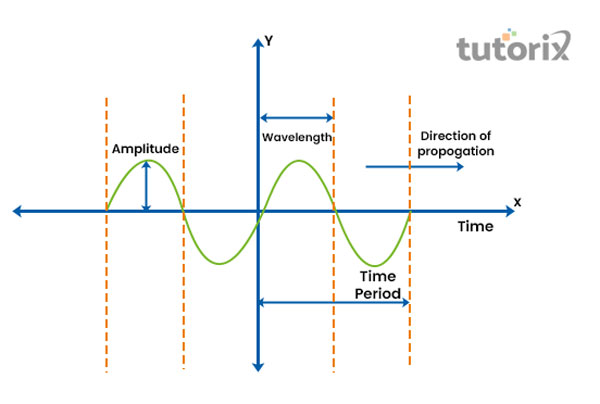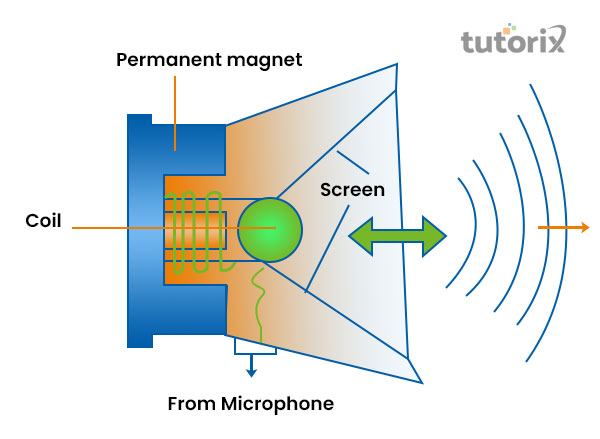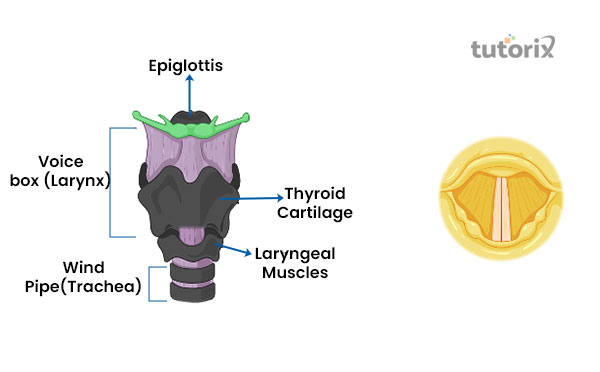

The vibration, which is travelling through the air or any other medium in the form of an “audible mechanical” wave, is determined as the production of sound. The sound is produced from a “vibrating body” that can be of any medium: air, water, vacuum or an empty space. This phenomenon can be further explained through the example, that during the drum struck, the flexible membrane of the drum vibrates to produce sound. The production of sound is due to the expansion and compression of air on the other side “membrane that vibrates”. Here, the difference in sound waves found in the “vibrating membrane” occurs due to the certain amount of pressure exerted by the air on the drum.
If the object molecules vibrate due to a certain amount of pressure extended on them by air or external forces then sound will be produced. The sound that produces from the vibration of an object will travel as the waves, which are determined as the “vibrating particles”. These “waves of the sound” get reflected by the surfaces and are also considered to be the “pressure waves” (Francis et al. 2018). These sound waves can get fluctuated in the “air pressure” with the time accordingly. Sound waves are also determined as the traverse waves, which can be heard from a “fork striking” a plate or bowl. Any kind of music or human voice is also considered the sound.
In everyday life, all individuals are hearing various sorts of noise. Sounds, which are produced by humans: laughing, screaming, shouting, or talking. Sounds can also be produced by the noise of animals or birds like humans. If the “sound waves” are represented in “waveforms”, some characteristics can be noticed (Koh et al. 2018). These waveforms are the “pictorial representation” of “pressure variation” through which the sound travels in the form of air.

Figure 1: Characteristics of sound
These “sound waves” are considered the alternative regions of low and high pressure. Sound waves also have similar characteristics to light and "electromagnetic radiation". There is a variation like the light travels faster in a vacuum or an empty space; “sound waves” cannot travel in a vacuum (Geeksforgeeks, 2021). Sound is the “Mechanical waves" that require a propagation medium, and not travel in an empty space and have zero speed in a vacuum. Air travels faster than sound in a vacuum.
There are various uses of the “sound reflection”, that are mentioned below. The device that produces sound and has a "conical shape" enhances the sound waves' intensity in a specific direction. The devices are microphones, gramophones, and so on. Sound undergoes various reflections in the devices like the "stethoscope" used by the doctors. The sound waves travel along the wires of the “stethoscope”. In the halls or auditorium, the “curved ceiling” and the “soundboards” distribute sound equally across the entire hall.
The larynx or the speech box is ideally utilised by humans in making the sound. The voice box is situated in the human body at the windpipe's top in the throat. The vocal cords within the human body are identified as the two ligaments found in the voice box. The existing vocal cords in the human body are attached to the muscles that change the stretching or stress of the cords along with the space between them (Hong & Curran, 2019). The muscles of vocal cords are fully relaxed, letting them loosen and separate, permitting the air from the lungs to pass through them without creating any sound.

Figure 2: Sound produce through loudspeaker
The two vocal cords are dissected by abroad distance when the humans are not singing or speaking. The muscles in the vocal cords stretched, closed and contracted both the vocal cords collaboratively leaving small silt between the two. An air stream is travelled between both the vocal cords by the lungs (Skoe & Tufts, 2018). The vocal cords start vibrating because of the air and the sound is created by vibrating vocal cords. It can be said that the sound is created with the assistance of a voice box. This is the ultimate area, which humans realise when swallowing food. A hard bum is going to shift up and down significantly.

Figure 3: Sound produced by a human through the larynx
The apparatus for creating the human voice can be classified into major three parts: Lungs, Articulators and vocal folds within the voice box. Lungs are demonstrated as an air-filled organ that is fitted on different sides of the chest (Della Santina et al. 2019). Articulators are identified as tongue, gums and teeth, glottis and upper and lower lip. The larynx is the other name of a human's voice box, which is the main part that helps to produce a voice. The larynx within a human body is available in the neck region.
In humans, the sound is created by the larynx or voice box. The vocal folds create sound when they are nearer as air passes during the procedures. The vocal folds that are adhered inside the "voice box" to the highest cartilage of the throat are referred to as Adam's apple. In the creation of sound, the vocals are required to vibrate simultaneously in a continuous and symmetric manner. Rate of vibration assists in deciding the pitch of a sound. Muscles within the throat attached to the vocal cords might create the cords lose or rigid. Voice quality gets different when the vocal cords loosen or thicken.
Q1. What is the requirement of a voice box?
The voice box is liable for initiating and continuing the process of communication. It assists in gulping or swallowing the chewed food. The voice box assists in the breathing process by providing the way for carbon-di-oxide and oxygen to pass through.
Q2. What is the size of human vocal cords?
In humans, females have around 15mm vocal cords whereas males possess 20mm usually. Among the male and females, males have the longest vocal cords.
Q3. Which human organs are liable for creating vibration?
The voice box within the human throat is liable for creating vibrations. Vibration helps to create sound waves through propagation.
Q4. What is the range of hearing for humans?
Human beings have an audible range from 20Hz to 20000 Hz. Children below 5 years have an audible range of around 25 kHz.
Della Santina, C., Arapi, V., Averta, G., Damiani, F., Fiore, G., Settimi, A., ... & Bianchi, M. (2019). Learning from humans how to grasp: a data-driven architecture for autonomous grasping with anthropomorphic soft hands. IEEE Robotics and Automation Letters, 4(2), 1533-1540. Retrieved from: https://ieeexplore.ieee.org/abstract/document/8629968/
Francis, N. A., Zhao, W., & Guinan Jr, J. J. (2018). Auditory attention reduced ear-canal noise in humans by reducing subject motion, not by medial olivocochlear efferent inhibition: Implications for measuring otoacoustic emissions during a behavioural task. Frontiers in Systems Neuroscience, 12, 42. Retrieved from: https://www.frontiersin.org/articles/10.3389/fnsys.2018.00042/full
Hong, J. W., & Curran, N. M. (2019). Artificial intelligence, artists, and art: attitudes toward artwork produced by humans vs. artificial intelligence. ACM Transactions on Multimedia Computing, Communications, and Applications (TOMM), 15(2s), 1-16. Retrieved from: https://dl.acm.org/doi/abs/10.1145/3326337?casa_token=5fcinySMD1wAAAAA:kwRcJoNigjYrzzpEZ-eF3xc0nxVzmAML4F2eZ2IsrFciQ2pHBRiRbJlybiSRfzw5OgQykshQk6ldKuo
Koh, K., Kwon, H. J., Kiemel, T., Miller, R. H., Park, Y. S., Kim, M. J., ... & Shim, J. K. (2018). Intra-auditory integration between pitch and loudness in humans: Evidence of super-optimal integration at moderate uncertainty in auditory signals. Scientific reports, 8(1), 1-10. Retrieved from: https://www.nature.com/articles/s41598-018-31792-w
Skoe, E., & Tufts, J. (2018). Evidence of noise-induced subclinical hearing loss using auditory brainstem responses and objective measures of noise exposure in humans. Hearing research, 361, 80-91. Retrieved from: https://www.sciencedirect.com/science/article/pii/S0378595517304616
Geeksforgeeks (2021). About Characteristics of Sound. Retrieved from: https://www.geeksforgeeks.org/what-are-the-characteristics-of-sound-waves/ [Retrieved on: 17th June 2022]
Geeksforgeeks (2022). About How is Sound Produced by Humans? Retrieved from: https://www.geeksforgeeks.org/how-is-sound-produced-by-humans/ [Retrieved on: 17th June 2022]